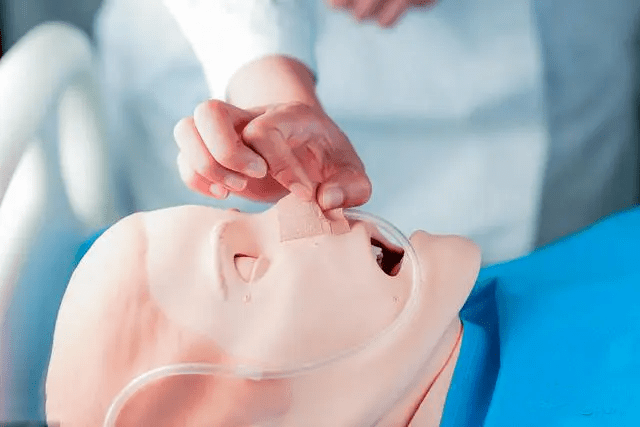In our daily clinical work, when our emergency medical staff suggest to place a gastric tube for a patient due to various conditions, some family members often express views like the above. So, what exactly is a gastric tube? Which patients need to have a gastric tube placed?

I. What is a gastric tube?
Gastric tube is a long tube made of medical silicone and other materials, non-rigid but with some toughness, with different diameters depending on the target and the route of insertion (through the nose or through the mouth); although collectively called “gastric tube”, it can be divided into gastric tube (one end into the digestive tract reaches the stomach lumen) or jejunal tube (one end into the digestive tract reaches the beginning of the small intestine) depending on the depth of insertion. (one end of the digestive tract reaches the beginning of the small intestine). Depending on the purpose of treatment, a gastric tube can be used to inject water, liquid food or medication into the patient’s stomach (or jejunum), or to drain the contents of the patient’s digestive tract and secretions to the outside of the body through the gastric tube. With the continuous improvement of materials and manufacturing process, the smoothness and corrosion resistance of the gastric tube have been improved, which makes the gastric tube less irritating to the human body during placement and use and extends its service life to varying degrees.
In most cases, the gastric tube is placed through the nasal cavity and nasopharynx into the digestive tract, which causes relatively little discomfort to the patient and does not affect the patient’s speech.
Second, which patients need to place gastric tube?
1. Some patients have severely weakened or lost the ability to chew and swallow food for various reasons, so if they are forced to take in food through the mouth, not only the quality and quantity of food cannot be guaranteed, but also the food may enter the airway by mistake, leading to more serious consequences such as aspiration pneumonia or even asphyxia. If we rely on intravenous nutrition too early, it will easily cause gastrointestinal mucosa ischemia and barrier destruction, which will further lead to complications such as peptic ulcer and bleeding. Acute conditions that can lead to the inability of patients to eat smoothly through the mouth include: various causes of impaired consciousness that are difficult to recover within a short period of time, as well as acute swallowing dysfunction caused by stroke, poisoning, spinal cord injury, Green-Barre syndrome, tetanus, etc.; chronic conditions include: the sequelae of some central nervous system diseases, chronic neuromuscular diseases (Parkinson’s disease,, myasthenia gravis, motor neuron disease, etc.) on mastication. Chronic conditions include the sequelae of some central nervous system diseases, chronic neuromuscular diseases (Parkinson’s disease, myasthenia gravis, motor neuron disease, etc.) that have a progressive impact on mastication and swallowing function until they are severely lost.
2. Some patients with severe diseases often have a combination of gastroparesis (the peristaltic and digestive functions of the stomach are significantly weakened, and food entering the gastric cavity can easily cause nausea, vomiting, retention of gastric contents, etc.), or in severe acute pancreatitis, when onsite nutrition is required, jejunal tubes are placed so that food, etc. can enter the small intestine (jejunum) directly without relying on gastric peristalsis.
The timely placement of a gastric tube to feed nutrition in patients with these two types of conditions not only reduces the risk of complications but also ensures nutritional support as much as possible, which is an important part of improving the prognosis of treatment in the short term, but also happens to be one of the measures to improve the quality of life of patients in the long term.
3. Pathological obstruction of the gastrointestinal tract such as intestinal obstruction and gastric retention caused by various etiologies, severe edema of the gastrointestinal mucosa, acute pancreatitis, before and after various gastrointestinal surgeries, etc., which require temporary relief of further stimulation and burden on the gastrointestinal mucosa and gastrointestinal organs (pancreas, liver), or require timely pressure relief in the obstructed gastrointestinal cavity, all require artificially established ducts to transfer This artificial tube is called a gastric tube and is used to drain the contents of the digestive tract and the secreted digestive juices to the outside of the body. This artificial tube is a gastric tube with a negative pressure device attached to the external end to ensure continuous drainage, an operation called “gastrointestinal decompression”. This procedure is actually an effective measure to relieve the patient’s pain, not to increase it. Not only does the patient’s abdominal distension, pain, nausea and vomiting decrease significantly after this procedure, but the risk of complications is also reduced, creating the conditions for further cause-specific treatment.
4. The need for disease observation and auxiliary examination. In some patients with more serious acute gastrointestinal conditions (such as gastrointestinal bleeding) and unable to tolerate gastrointestinal endoscopy and other examinations, a gastric tube can be placed for a short period of time. Through drainage, changes in the amount of bleeding can be observed and measured, and some tests and analyses can be performed on the drained digestive fluid to help clinicians determine the patient’s condition.
5. Gastric lavage and detoxification by placing a gastric tube. For acute poisoning of some poisons that enter the body through the mouth, gastric lavage through a gastric tube is a quick and effective measure if the patient cannot cooperate with vomiting on his own, as long as the poison is not strongly corrosive. These poisonings are common such as: sleeping pills, organophosphorus pesticides, excessive alcohol, heavy metals and some food poisoning. The gastric tube used for gastric lavage needs to be of large diameter in order to prevent blockage by gastric contents, which affects the efficiency of treatment.
Media Contact
Company Name: Ningbo Raycaremed Medical Instruments Co., Ltd
Email: Send Email
Phone: 008615867465464
Country: China
Website: https://www.raycare-med.com/
